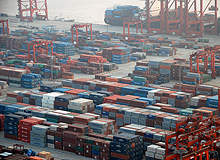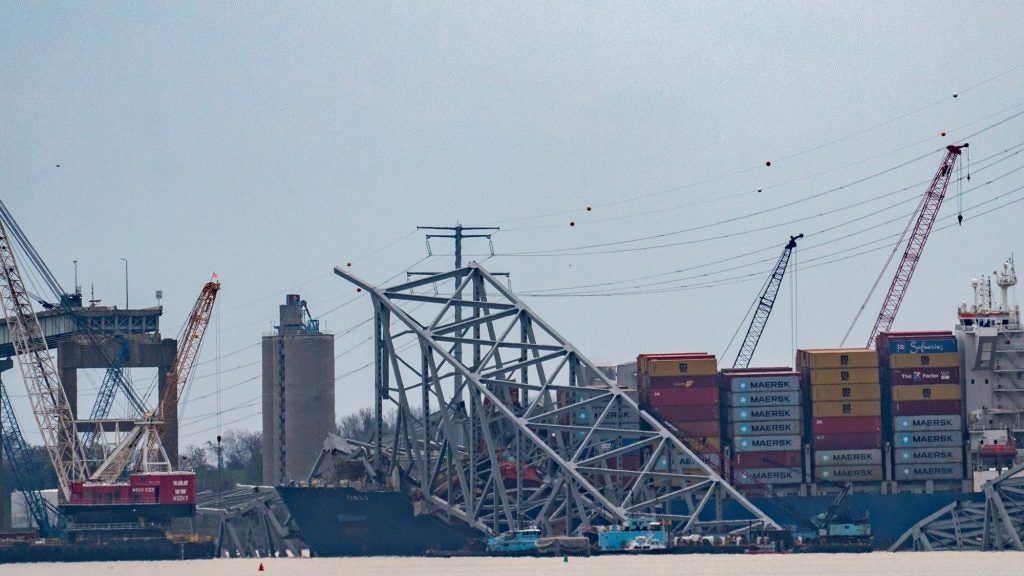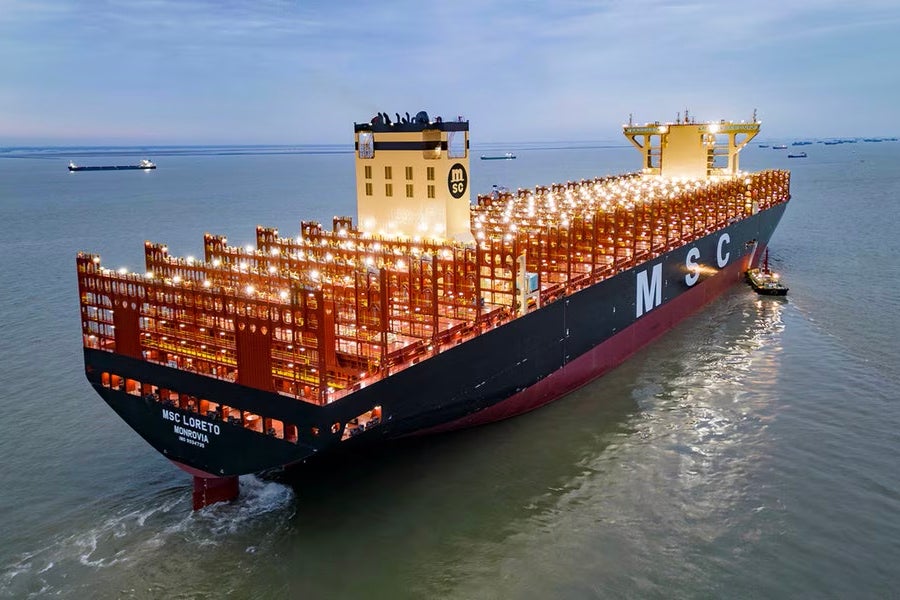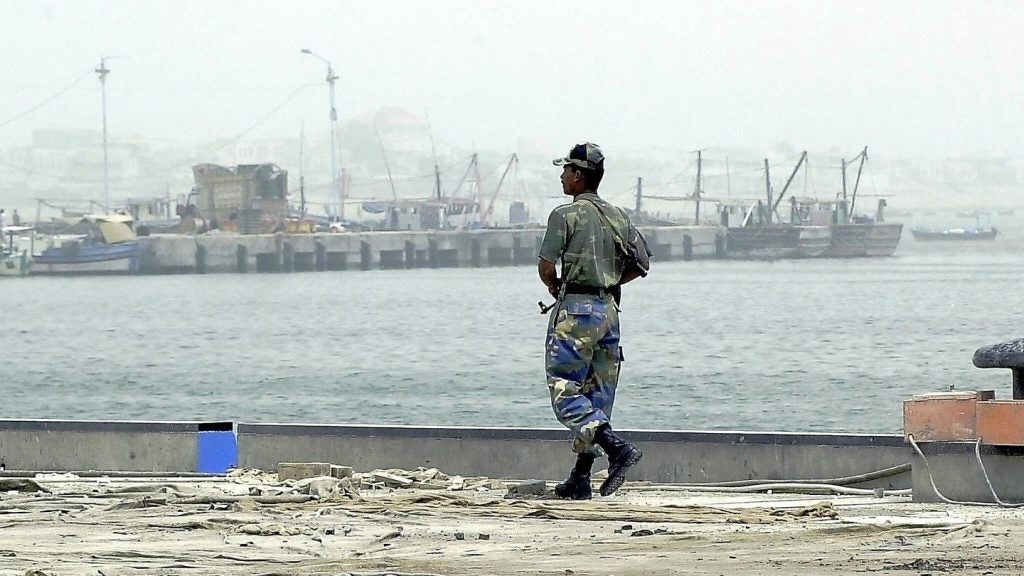
Click here to read our updated list of the busiest container ports in the world
Ranking the Top Ports by Cargo Throughput and Container Volume
Port of Shanghai
The Port of Shanghai is the biggest port in the world based on cargo throughput. The Chinese port handled 744 million tonnes of cargo in 2012, including 32.5 million twenty-foot equivalent units (TEUs) of containers.
The port is located at the mouth of the Yangtze River covering an area of 3,619km². Shanghai International Port Group (SIPG) owns the port facility. Wusongkou, Waigaoqiao and Yangshan are the three main container port areas.
The port comprises of 125 berths with a total quay length of about 20km. It serves more than 2,000 container ships on a monthly basis and accounts for a quarter of China’s total foreign trade.
Port of Singapore
The Port of Singapore, which handled 537.6 million tonnes of cargo in 2012, is the second biggest port in the world. The port’s container throughput crossed the 30 million TEUs mark for the first time in 2012.
The port terminals are located at Tanjong Pagar, Keppel, Brani, Pasir Panjang, Sembawang and Jurong. The terminals are managed by PSA Singapore and Jurong Port.
See Also:
The port receives an average of 140,000 vessels on an annual basis and connects to 600 ports globally. It is equipped with 204 quay cranes and a number of gantry cranes.
How well do you really know your competitors?
Access the most comprehensive Company Profiles on the market, powered by GlobalData. Save hours of research. Gain competitive edge.

Thank you!
Your download email will arrive shortly
Not ready to buy yet? Download a free sample
We are confident about the unique quality of our Company Profiles. However, we want you to make the most beneficial decision for your business, so we offer a free sample that you can download by submitting the below form
By GlobalDataA major terminal expansion project is currently underway at the Port of Singapore, which, when fully commissioned in 2020, will add 15 more berths.
Port of Tianjin
The third biggest port in the world is the Port of Tianjin (formerly Tanggu), which in 2012 witnessed remarkable increase of cargo and container throughputs by 5.3% and 6.2% respectively. It handled 476 million tonnes of cargo and 12.3 million TEUs of containers in 2012.
Located in the mouth of Haihe River in northern China, the port covers an area of 336km² of water and 131km² of land. It connects to more than 500 ports and serves 189 countries. Tianjin Port Group Companies is the operator.
The port features 159 berths and is made up of the northern port, southern harbour, Dongjiang Port, an economic zone in the southern region, the south-east region and other auxiliary harbours.
Port of Guangzhou
The Port of Guangzhou handled more than 460 million tonnes of cargo in 2012, making it the fourth biggest port in the world based on cargo traffic. The port is located in the middle of the Pearl River Delta.
It is operated by Guangzhou Port Authority and handled the first 100 million tonnes of cargo in 1999. The cargo traffic has increased significantly since then.
The port comprises four main areas including Downtown Port, Huangpu Port, Xinsha Port and Nansha Port Area. It is currently the largest loading and discharging port for coal in China.
Port of Ningbo
Port of Ningbo, which handled more than 453 million tonnes of cargo in 2012, is the fifth biggest port in the world. The port’s TEU capacity also reached 15.6 million tonnes in the same year.
The port is located in the coastal province of Zhejiang and is comprised of Beilun Port Area, Zhenhai Port Area, Ningbo Port Area, Daxie Port Area and Chuanshan Port Area. Ningbo Port Group is the operator of the port.
Comprising of 309 berths, the port connects to more than 600 ports in more than 100 countries. It was recently been merged with the Port of Zhoushan. The combined TEU capacity of the two ports reached 16.83 million tonnes in 2012.
Port of Rotterdam
The Port of Rotterdam is currently the biggest port in Europe and the sixth biggest in the world by annual cargo throughput. The port handled 441.5 million tonnes of cargo in 2012.
The port, including an industrial complex within its vicinity, stretches across a length of about 42km, covering an area of approximately 12,426ha. It is managed and operated by the Port of Rotterdam Authority (PoRA).
It is the only port in north-western Europe that offers unrestricted access to ships with the deepest draughts. A major port expansion project, dubbed as Maasvlakte 2, was launched in 2008. The first phase of the expansion was opened in May 2013 and will eventually double the port’s container transfer capacity.
Port of Suzhou
Port of Suzhou, which achieved a cargo throughput of 428 million tonnes in 2012, an increase of 12.61% from 2011, is currently the seventh biggest port in the world by cargo throughput. It is also one of the busiest inland river ports in the world.
The port is owned by Suzhou Municipal Government. It comprises of Zhangjiagang, Changshu and Taicang ports, located on the lower reaches of the Yangtze River in Jiangsu province.
The port features 224 berths and deals with hundreds of international and domestic shipping lines. It mainly trades in cargo including coal, steel and construction materials. The port authority is with Suzhou Harbour Administration Department.
Port of Qingdao
Port of Qingdao, located at the entrance to Jiaozhou Bay on the south coast of Shadong Peninsula, overlooking the Yellow Sea, handled more than 400 million tonnes of cargo in 2012. It currently ranks as the eighth biggest port in the world.
The port is touted as the world’s largest port for iron ore and China’s largest port of crude oil. The port merges Qingdao Old Port, Huangdao Oil Port and Qianwan New Port, and is connected to more than 450 ports in more than 130 countries and regions across the world.
Qingdao Economic and Technological Development Area, Qingdao Free Trade Zone and Qingdao High-tech Industrial Zone are located within the vicinity of the port. The port is operated by Qingdao Port Group.
Port of Dalian
Port of Dalian, located in the Liaodong Peninsula in Liaoning province, handled more than 303 million tonnes of cargo in 2012 ranking as the ninth biggest port in the world.
Owned and managed by Dalian Port Company, the port comprises of seven areas, namely Daliangang, Dalianwan, Xianglujiao, Nianyuwan, Ganjinzi, Heizuizi, Si’ergou and Dayaowan.
The port handles around 70% of the region’s cargo and 90% of the region’s container transportation. It features approximately 80 berths and is connected to approximately 99 shipping lines around the world.
Port of Busan
Port of Busan, located in mouth of the Naktong River in South Korea, is the tenth biggest port in the world based on cargo throughput. The port handled 298 million tonnes of cargo in 2012.
Managed and operated by the Busan Port Authority (BPA), the port is made up of North Port, South Port, Gamcheon Port and Dadaepo Port, an international passenger terminal and six container terminals.
The South Korean port handles 40% of the total marine export freights, 80% of container freights and 42% of fisheries production of the entire nation. It is spread over an area of 840,000m² and is capable of handling 169 vessels simultaneously.







